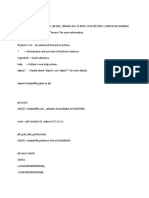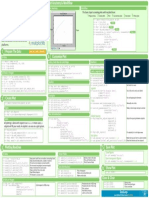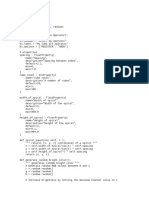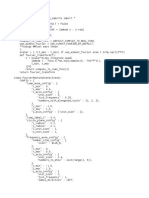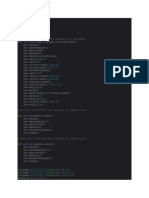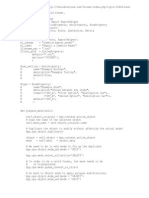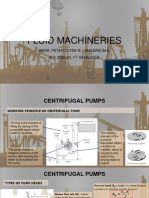0% found this document useful (0 votes)
14 views5 pagesMain 5
The document contains a Python script that utilizes libraries such as Matplotlib and Tkinter to visualize and manage radioactive waste data from an Excel file. It defines functions to load data, create 3D cubes based on coordinates, handle keyboard events for navigation, and draw visual representations of the data. The script also sets up a GUI for user interaction, allowing users to visualize dose rates in different configurations.
Uploaded by
hinoxgameCopyright
© © All Rights Reserved
We take content rights seriously. If you suspect this is your content, claim it here.
Available Formats
Download as TXT, PDF, TXT or read online on Scribd
0% found this document useful (0 votes)
14 views5 pagesMain 5
The document contains a Python script that utilizes libraries such as Matplotlib and Tkinter to visualize and manage radioactive waste data from an Excel file. It defines functions to load data, create 3D cubes based on coordinates, handle keyboard events for navigation, and draw visual representations of the data. The script also sets up a GUI for user interaction, allowing users to visualize dose rates in different configurations.
Uploaded by
hinoxgameCopyright
© © All Rights Reserved
We take content rights seriously. If you suspect this is your content, claim it here.
Available Formats
Download as TXT, PDF, TXT or read online on Scribd
/ 5




















